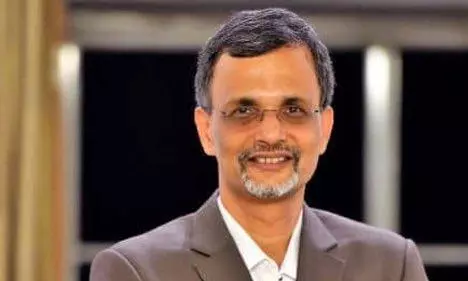
Educated youth constituted 65.7% of unemployed Indians in 2022: Report
Unemployment is increasingly concentrated among youth, especially educated youth and women in urban areas, said the report released by IHD-ILO

The “India Employment Report 2024” was released by the Institute for Human Development (IHD) and International Labour Organisation (ILO) on Tuesday (March 26) in New Delhi. The report highlighted the fact that the employment conditions in India remain poor, and the problem of unemployment in India has become increasingly concentrated among the youth, especially educated youth and women in urban areas.
Releasing the report, India’s Chief Economic Adviser V Anantha Nageswaran said that industry needed to hire more, and that it was not correct to think that there has to be government intervention for every social or economic problem. He said the government had taken several initiatives for employment including skill development, the National Education Policy (NEP), Atmanirbhar Bharat Rozgar Yojana, the new tax rule allowing for deductions of wages to employers, and payment of employers’ contribution for new employees under the Employees’ Provident Fund Organisation (EPFO).
With regard to the skill development initiatives, he said there was scope for improvement in the non-availability of instructors and the dropout rate, and the government is mindful of that.
Wages stagnant or declining
The employment conditions remain poor even as there was some improvement in recent years in overall labour force participation, workforce participation, and employment rates after showing long-term deterioration from 2000-2019, said the report. It said women largely account for the increase in self-employment and unpaid family work, that youth employment is of poorer quality than employment for adults, and that wages and earnings are stagnant or declining.
More educated youths face job crisis
The report noted that unemployment among youth, especially those with a secondary level of education or higher, has intensified over time. The share of unemployed youths in the total unemployed population was as high as 82.9 per cent in 2022. The share of educated youths among all unemployed people increased from 54.2 per cent in 2000 to 65.7 per cent in 2022.
Women accounted for a larger share (76.7 per cent) than men (62.2 per cent) among the educated unemployed youths (those with secondary level or higher education).
Priority for labour-intensive manufacturing
As India is likely to add 7-8 million youths annually to the labour force during the next decade or so, the IHD-ILO report emphasised that economic policies are needed to increase productive non-farm employment, especially in the manufacturing sector. India needs to give priority to labour-intensive manufacturing employment to cater to the large population of unskilled labour, it said. More support has to be given to micro, small, and medium-sized enterprises, particularly by providing a more supportive, decentralised approach. The report also stressed the importance of digitalisation and artificial intelligence and a cluster-based approach to manufacturing.
Five key areas for action
The report pointed out five important policy areas for more action:
· Promoting job creation
· Improving employment quality
· Addressing labour market inequalities
· Strengthening skills and active labour market policies
· Bridging the knowledge deficits on labour market patterns and youth employment
Larger role for state govts, private sector
India needs to invest in and regulate sectors like the digital economy and the care sector that are likely to provide more jobs for young people. The country needs to develop an inclusive urban policy to address the needs of migrants, women, and impoverished young people as urbanisation and migration is expected to increase in India. Skills development and active labour market policies had to be more effective in bridging the supply-demand gap in jobs and in making the overall labour market more inclusive. Finally, the report suggested a larger and more targeted role for state governments along with stronger partnerships with the private sector and other stakeholders.

